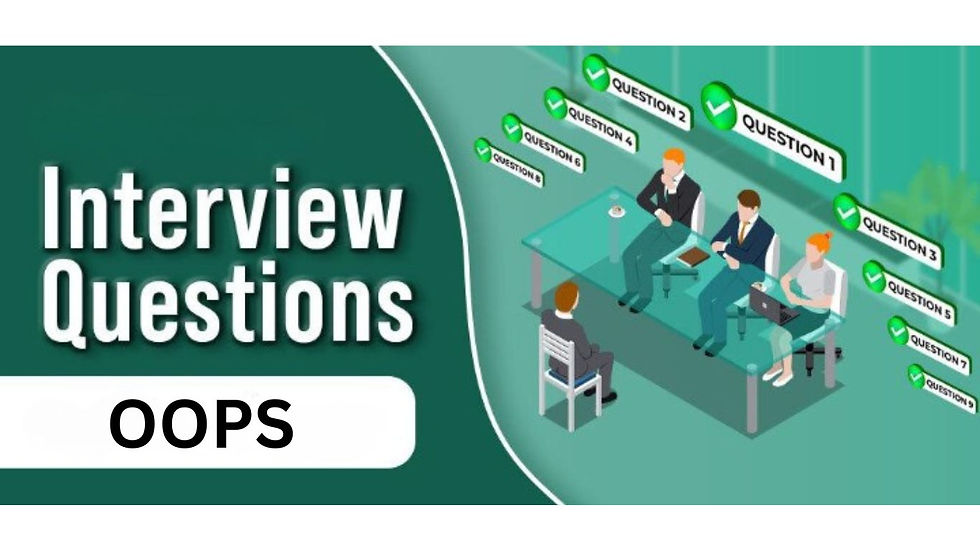What are the best flutter interview questions when hiring?
- Divyansh WsCube
- Oct 18, 2023
- 3 min read

Introduction
In today's highly competitive job market, employers are constantly seeking skilled developers to join their teams. When it comes to mobile app development, Flutter has gained significant popularity for its ability to build high-quality, cross-platform applications efficiently. Whether you're an employer looking to hire a Flutter developer or a job seeker preparing for a Flutter interview, it's essential to be well-prepared. To help you navigate the interview process, we've compiled a list of the best Flutter interview questions.
1. What is Flutter, and how does it differ from other mobile development frameworks?
This is a fundamental question that tests the candidate's knowledge of Flutter. A strong response should include an explanation of Flutter as an open-source UI software development kit (SDK) and highlight its key advantages, such as hot-reload and the ability to create natively compiled applications for mobile, web, and desktop from a single codebase.
2. Describe the widget tree in Flutter.
The widget tree is the core concept in Flutter. The candidate should discuss the hierarchy of widgets that make up a Flutter application, starting with the root widget (usually Material App) and branching out to other widgets like Scaffold, Container, and more. A clear understanding of how widgets are composed is essential for building Flutter apps.
3. What is "Stateless" and "Stateful" widgets in Flutter, and when would you use each?
Stateless widgets are immutable and don't change once they're built, while stateful widgets can change dynamically. The candidate should be able to explain when to use each type of widget and provide examples of scenarios where stateful widgets are necessary for managing changing data.
4. Explain the concept of "hot-reload" in Flutter.
Hot-reload is a powerful feature in Flutter that allows developers to make changes to the code and see the updates in real-time without restarting the app. The candidate should describe how this feature enhances the development process and accelerates debugging.
5. What is the role of the "pubspec.yaml" file in a Flutter project?
The "pubspec.yaml" file is the configuration file for a Flutter project. It contains information about the project's dependencies, assets, and metadata. The candidate should be able to explain the significance of this file and how it influences the project's behavior.
6. What are "Packages" in Flutter, and how do you use them?
Flutter packages are pre-built libraries that can be easily integrated into a Flutter project to add functionality or features. The candidate should discuss how to find and include packages in a project using the pubspec.yaml file and provide examples of when they would use specific packages.
7. Discuss the differences between "main()" and "run App()" in a Flutter app.
The main() function is the entry point of a Dart program, while run App() is a Flutter method used to run the main application widget. The candidate should explain the role of each and how they work together to launch a Flutter application.
8. How does Flutter handle platform-specific code and plugins?
Flutter allows developers to access platform-specific features and plugins using the "platform channels" mechanism. The candidate should be able to describe how this works, how it facilitates cross-platform development, and provide examples of platform-specific code integration.
9. Can you explain the concept of "Widgets in Flutter"?
Widgets are building blocks in Flutter. There are two main types: Stateless Widgets and Stateful Widgets.
Stateless Widgets: These are widgets that do not change during their lifetime. They are immutable and don't have internal state. Examples include Text, Icon, and Container.
Stateful Widgets: These widgets have mutable state and can change during their lifetime. Examples include List View, Text Field, and Checkbox.
Widgets can be combined to create complex UI structures, forming the visual components of a Flutter app.
10. Discuss the pros and cons of using Flutter for mobile app development.
A well-rounded candidate should be able to provide an informed analysis of Flutter's advantages and disadvantages. Some pros include its single codebase for multiple platforms, fast development with hot-reload, and a vibrant community. On the downside, Flutter might face limitations in terms of platform-specific features and the need for native code integration in some cases.
Conclusion
These ten questions are just a starting point for evaluating a Flutter developer's knowledge and expertise. Depending on the specific requirements of your project or organization, you may want to tailor your interview questions to delve deeper into particular areas of expertise, such as state management, API integration, or architectural patterns like BLoC or Provider.
In addition to these technical questions, don't forget to assess a candidate's problem-solving skills and their ability to adapt to new challenges and requirements. A well-rounded Flutter developer should be able to not only write code but also think critically and architect solutions effectively.
Remember that Flutter is a versatile framework that's constantly evolving, so your ideal candidate should demonstrate a willingness and ability to keep learning and adapting to new features and best practices in the Flutter ecosystem.



Comments